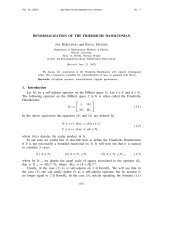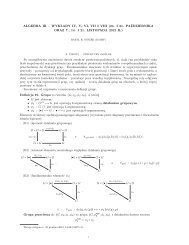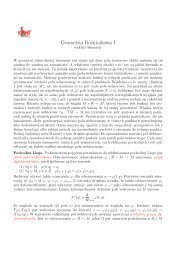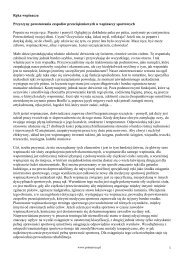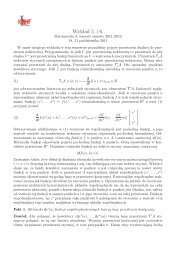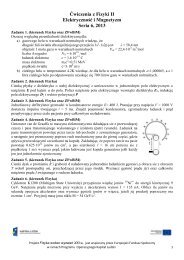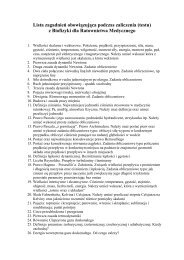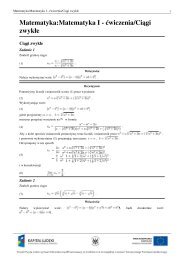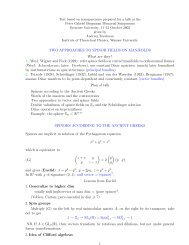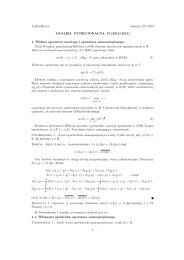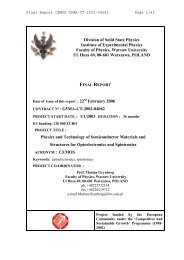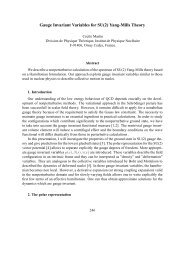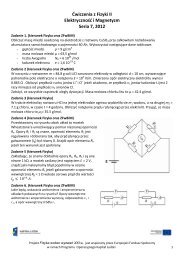Bessel equation
Bessel equation
Bessel equation
You also want an ePaper? Increase the reach of your titles
YUMPU automatically turns print PDFs into web optimized ePapers that Google loves.
If m ∈ Z, then I−m(z) and Im(z) are linearly independent and span the space of solutions of the<br />
modified <strong>Bessel</strong> <strong>equation</strong>.<br />
We have<br />
Im(e ±iπ z) = e ±iπm Im(z).<br />
1.4 Integral representations of modified <strong>Bessel</strong> function<br />
We start with <strong>Bessel</strong>-Schläfli-type representations. If Rez > 0, then the basic contour integral representation<br />
of Im is<br />
Im(z) = 1<br />
<br />
2πi ]−∞,0 + <br />
z<br />
exp<br />
,−∞[ 2 (t + t−1 <br />
) t −m−1 =<br />
dt (1.4.5)<br />
1<br />
<br />
z<br />
<br />
<br />
m<br />
exp s +<br />
2πi 2<br />
z2<br />
<br />
s<br />
4s<br />
−m−1 ds. (1.4.6)<br />
]−∞,0 + ,−∞[<br />
To see this note that by (1.4.5), Im is holomorphic around zero. Besides, by the Hankel identity<br />
<br />
1 1<br />
= exp (s) s<br />
Γ(m + 1) 2πi<br />
−m−1 ds.<br />
We also have<br />
]−∞,0 + ,−∞[<br />
I−m(z) = 1<br />
<br />
2πi [(0−0) + <br />
z<br />
exp<br />
] 2 (t + t−1 <br />
) t −m−1 dt. (1.4.7)<br />
Here, the contour starts at 0 from the negative side on the lower sheet, encircling 0 in the positive<br />
direction and ends at 0 from the negative side on the upper sheet,<br />
To see this we make a substitution t = s −1 in (1.4.5) noting that dt = −s −2 ds, and then we change<br />
the orientation of the contour.



